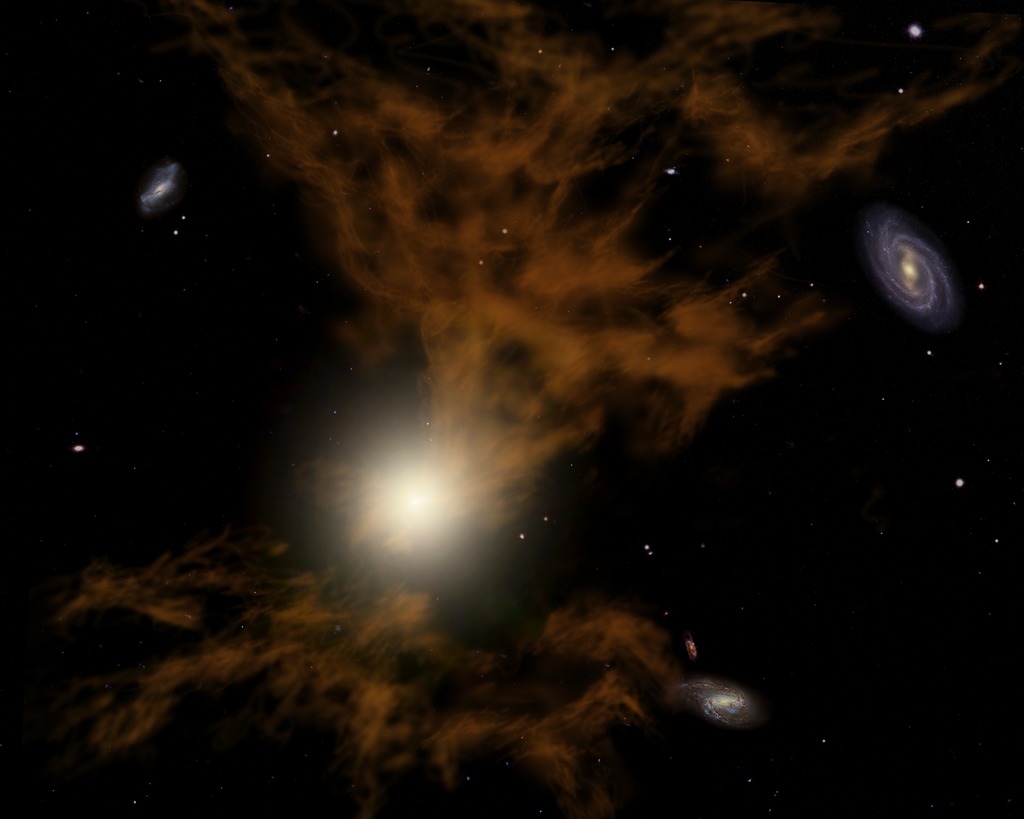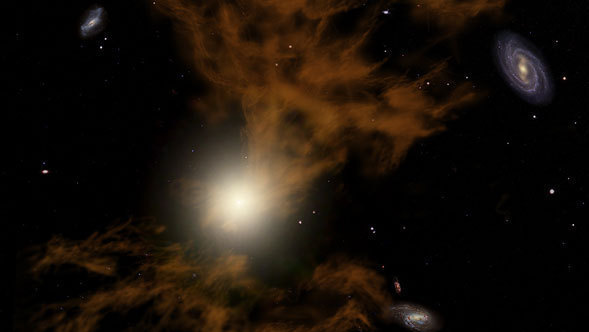
Credit: NASA/JPL-Caltech/R. Hurt (SSC)
Artwork • August 16th, 2007 • sig07-015
sig07-015
Astronomers using NASA's Spitzer Space Telescope have detected dust grains mingling with blazing hot gas at temperatures of 10 million degrees Kelvin (about 10 million degrees Celsius, or 17 million degrees Fahrenheit) in an area surrounding the elliptical-shaped galaxy called NGC 5044. Scientists liken this to finding a "snowflake in hell" and suspect that a supermassive black hole at the galaxy's center must have recently heated nearby cold, dusty gas through a process called "feedback heating."
In this artist's rendition, dust grains mixed with heated, outflowing gas can be seen as brown wisps to the north and south of the central yellow spot. The yellow region at the center represents a supermassive black hole in the galaxy's core that may be responsible for heating surrounding gas and dust.
About the Object
- Name
- NGC 5044
- Type
- Galaxy > Type > Elliptical
- Galaxy > Component > Central Black Hole
- Nebula
- Distance
- 123,000,000 Light Years
- Redshift
- 0.009





